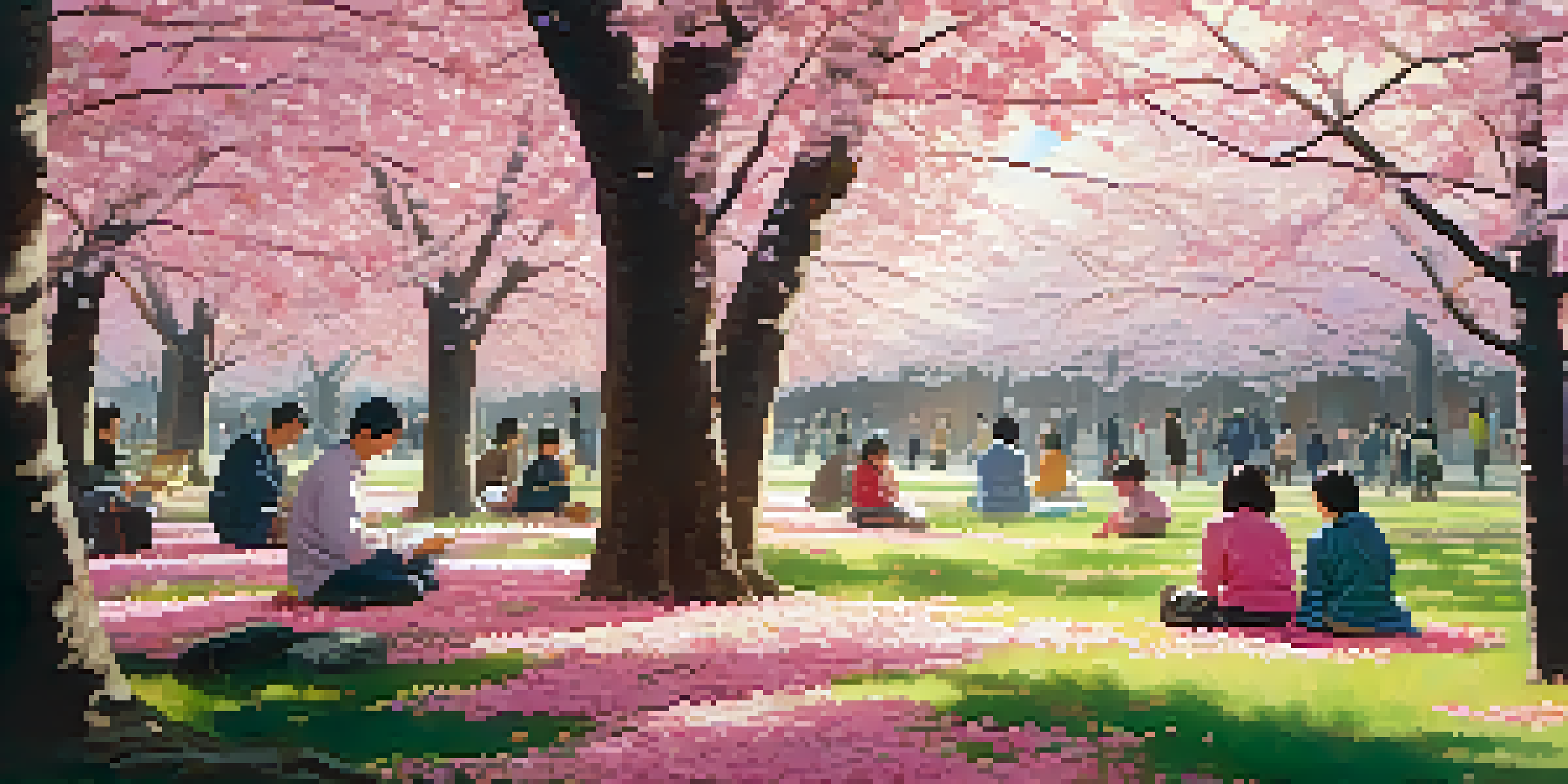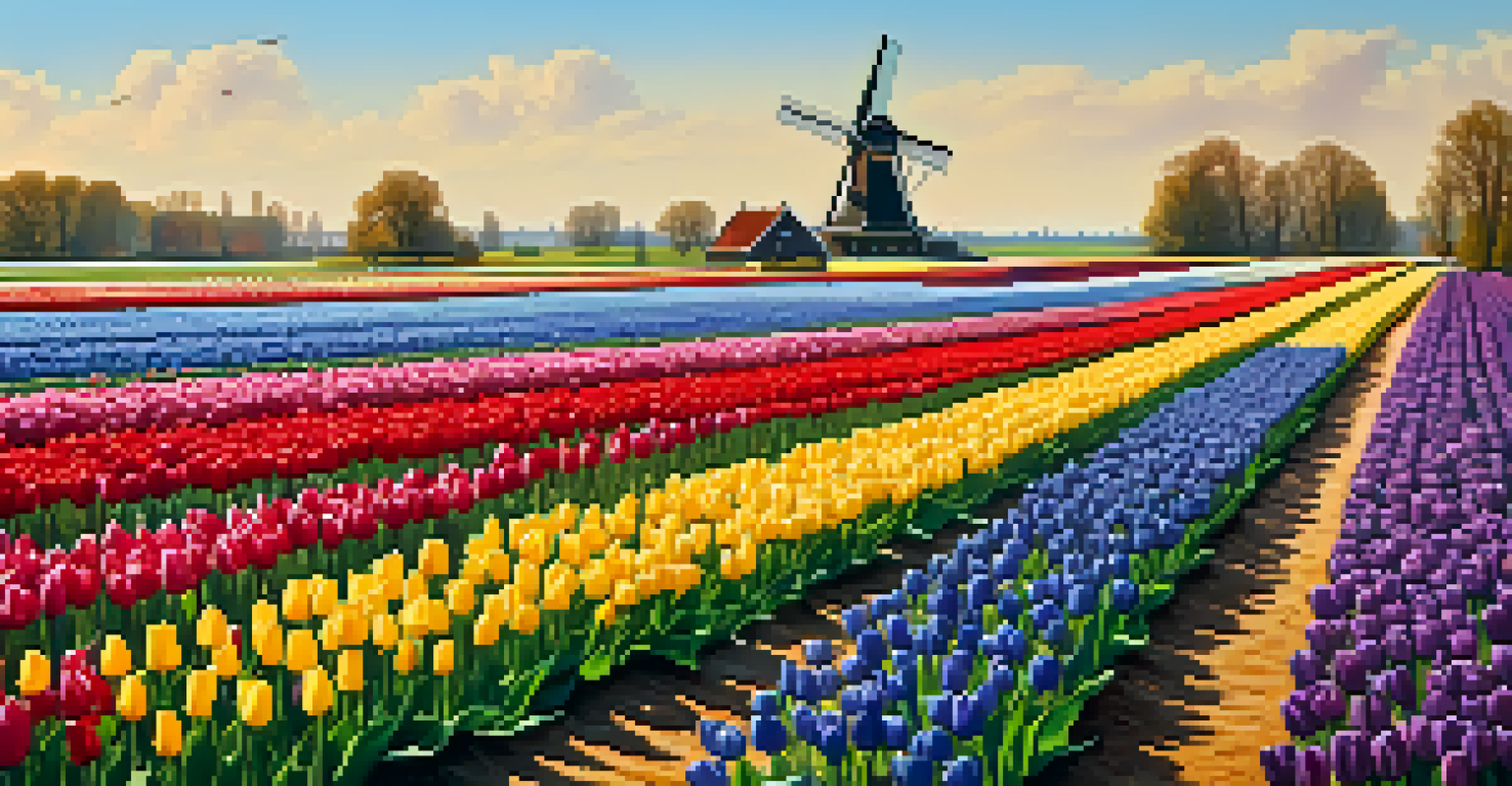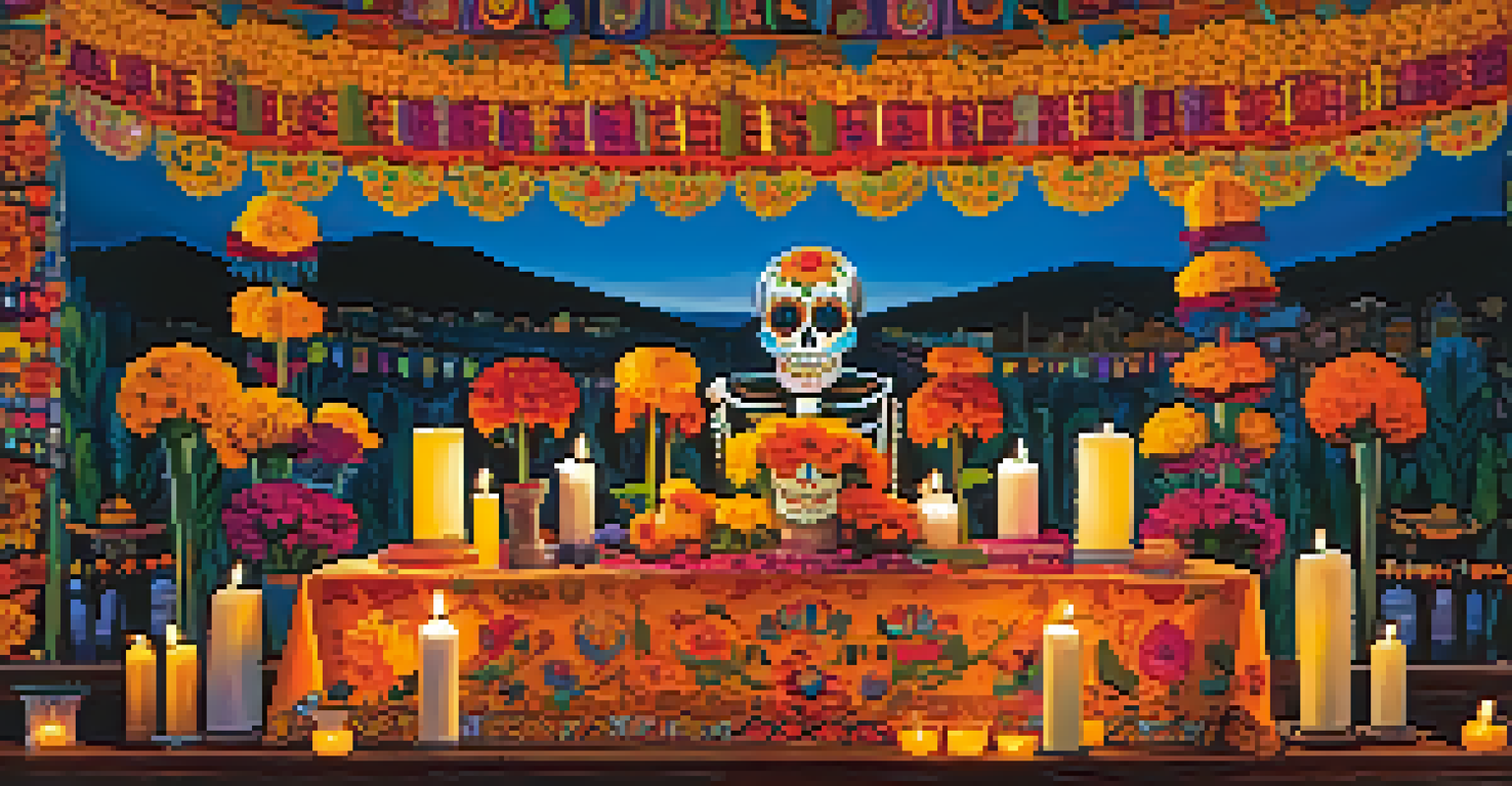Exploring the History of Plant Festivals Around the World

The Origins of Plant Festivals: A Global Overview
Plant festivals have roots that stretch deep into human history, often tied to agricultural practices. Many of these celebrations began as a way to honor the harvest, thanking the earth for its bounty. For instance, the ancient Greeks held Thesmophoria, a festival dedicated to Demeter, the goddess of grain and agriculture. These early festivals marked the change of seasons and served as communal gatherings to celebrate life and nature.
The greatest gift of the garden is the restoration of the five senses.
As societies evolved, so did the significance of these festivals. They became a way to foster community spirit, bringing people together to share in the joy of nature’s gifts. In different cultures, plant festivals have also incorporated rituals and traditions that reflect local beliefs, showcasing the diversity of human experience. These events often feature elaborate decorations made from flowers and plants, symbolizing fertility and prosperity.
Today, plant festivals are celebrated in various forms across the globe, from Japan’s Hanami cherry blossom festivals to India’s Onam festival, where floral carpets are laid out. Each of these festivals tells a unique story, illustrating how plants and flowers have always been integral to human culture. This rich tapestry of celebrations emphasizes our enduring connection to the natural world.
Spring Festivals: Celebrating New Life
Spring is a season bursting with energy and vitality, making it a popular time for plant festivals. One of the most famous is the Cherry Blossom Festival in Japan, where millions flock to view the breathtaking blooms. This event not only celebrates the beauty of cherry blossoms but also symbolizes renewal and the fleeting nature of life. Locals and tourists alike partake in picnics under the blossoms, creating moments of joy and reflection.

Another notable spring celebration is the Tulip Festival in the Netherlands, which showcases millions of vibrant tulips in full bloom. This festival attracts visitors from around the world, eager to experience the stunning displays and learn about horticulture. The history of tulip cultivation in the region adds an intriguing layer, with the flower once being so valuable that it led to the infamous Tulip Mania in the 17th century.
Plant Festivals Celebrate Nature's Gifts
Plant festivals have been celebrated across cultures as a way to honor agricultural practices, community spirit, and the beauty of nature.
These spring festivals serve as a reminder of the beauty of new beginnings. They encourage people to appreciate nature's artistry while also giving communities a chance to come together. The joy and camaraderie felt during these celebrations underscore the importance of plants in our lives, ushering in a sense of hope and renewal.
Autumn Harvest Festivals: Gratitude and Community
As summer transitions into autumn, harvest festivals emerge to celebrate the fruits of labor. These festivals are often steeped in traditions that reflect gratitude for the season's bounty. In the United States, Thanksgiving is a prime example—while it may not be a plant festival in the narrowest sense, it revolves around the harvest and the sharing of food, often featuring pumpkins, squash, and corn.
To plant a garden is to believe in tomorrow.
In Mexico, the Festival of the Day of the Dead honors deceased loved ones with vibrant altars adorned with marigolds, which symbolize the beauty of life and death. This unique celebration combines the reverence of memory with the joy of life, showcasing how plants play a pivotal role in cultural practices. The marigolds guide spirits back to the living world, demonstrating the deep connection between plants and human emotion.
These autumn festivals not only celebrate the harvest but also strengthen community bonds. They bring together families and friends, fostering a sense of belonging and shared purpose. As communities gather to give thanks, they also preserve cultural heritage, passing down traditions that continue to connect generations through the simple yet profound joy of plants.
Unique Plant Festivals Around the Globe
In addition to the more conventional festivals, there are unique plant celebrations that showcase the diversity of flora and culture. Take, for example, the Lavender Festival in France, held in the picturesque Provence region. Visitors can immerse themselves in fields of purple blooms, learning about the lavender harvest, and enjoying local cuisine infused with this aromatic herb. It’s an experience that tantalizes the senses and celebrates a beloved plant.
Another fascinating celebration is the Rose Festival in Portland, Oregon, which features over 10,000 rose bushes in bloom. This festival not only highlights the beauty of roses but also includes parades, live music, and an array of activities for families. This sense of community engagement helps raise awareness about gardening and environmental stewardship, emphasizing the role of plants in our everyday lives.
Cultural Significance of Flora
Specific plants often symbolize deeper meanings in festivals, connecting communities to their cultural heritage and identity.
These unique plant festivals illustrate how different cultures honor their local flora. They create opportunities for education and appreciation of the natural world while fostering local pride. The creativity and joy found in these celebrations remind us of the myriad ways plants enrich our lives, from beauty to sustenance.
Cultural Significance of Plants in Festivals
Plants hold profound cultural significance in many societies, often serving as symbols of hope, renewal, and life. For example, the use of olive branches in Mediterranean cultures represents peace and victory. During festivals, these symbols often come to life, enhancing the festivities with deep-rooted meanings that resonate with communities.
In many traditions, specific plants are associated with particular festivals, each carrying its own story and significance. The use of pumpkins in Halloween celebrations, for instance, reflects the harvest season and ancient rituals honoring the dead. Such traditions help to connect people with their cultural heritage, creating a sense of identity that is passed down through generations.
Understanding the cultural significance of plants in festivals enriches our appreciation for these celebrations. It highlights how plants are woven into the fabric of our lives, serving not only as decorations but as vital components of cultural expression. As we engage with these festivals, we are reminded of the stories plants tell and the connections they foster within communities.
Sustainable Practices in Modern Plant Festivals
As awareness of environmental issues grows, many modern plant festivals are incorporating sustainable practices. Organizers are increasingly mindful of their ecological footprint, emphasizing the importance of conservation and responsible resource use. For instance, some festivals now encourage guests to bring their own reusable containers to reduce waste from food and drink.
Additionally, educational components are becoming a staple of many plant festivals. Workshops on sustainable gardening, composting, and native plant cultivation are commonly featured. These initiatives not only celebrate plants but also inform attendees about the importance of preserving biodiversity and protecting ecosystems, fostering a deeper connection to the environment.
Sustainability in Modern Celebrations
Many plant festivals are now adopting sustainable practices to minimize environmental impact while educating attendees about conservation.
By prioritizing sustainability, these festivals are paving the way for future generations to enjoy the beauty of plants and flowers. They serve as a reminder that while we celebrate nature’s bounty, we also have a responsibility to protect it. This dual focus on celebration and conservation enriches the experience for everyone involved, creating a positive impact on both community and environment.
The Future of Plant Festivals: Trends and Innovations
As we look to the future, plant festivals are likely to evolve in exciting ways. With advancements in technology, we may see virtual plant festivals that allow global participation. These events can connect people from different cultures, sharing their unique plant traditions and stories, all while fostering a sense of community across distances.
Moreover, the integration of art and technology in festivals is on the rise, creating immersive experiences that engage all the senses. For example, augmented reality could allow attendees to see historical plant varieties in their native environments or visualize the impact of climate change on local flora. Such innovations can deepen appreciation for the natural world, making festivals not only celebratory but also educational.

Ultimately, the future of plant festivals promises to be vibrant and inclusive. By embracing new trends and technologies, these celebrations can continue to inspire future generations. They will remain a testament to our enduring relationship with plants, reminding us of their beauty and significance in our lives.